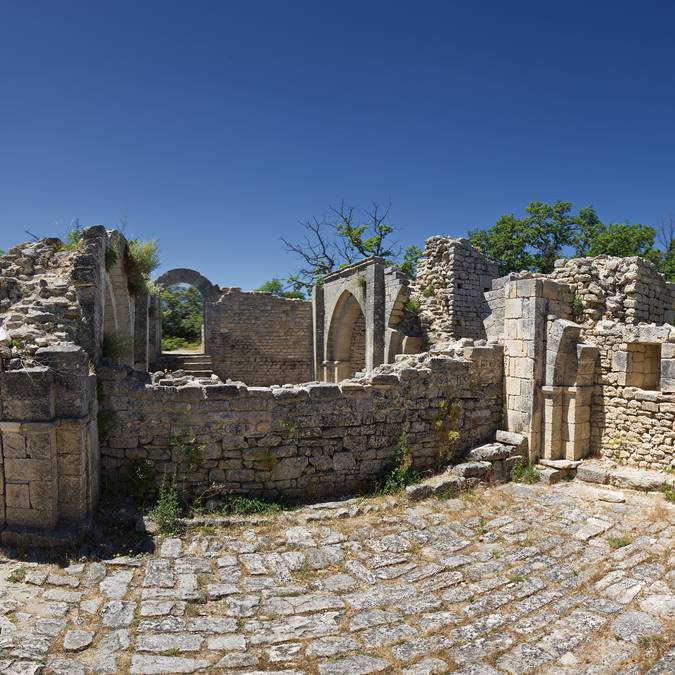
With a population of only 125, Buoux, in the heart of the Luberon, is well worth a visit... for a long time.
The old village with its winding streets, its small Provencal church, and the bastides that surround it were built in the 17th century.
The Fort of Buoux
Located at the top of a vast spur, the Fort of Buoux served as a refuge for its population during the invasions of the Middle Ages and during the wars of religion.
In 1660 King Louis XIV ordered the destruction of the fort, and since then the village has abandoned its defensive vocation...
Buoux remains a rural and pastoral village.
Today, as you walk through the village you will see that most of the houses date from the middle and end of the 17th century. These solid farms belonged to rich protestants, they are now maintained and restored with care and give a lot of character to the village. You will also be able to discover on the site of the fort portions of the rampart and the walls of the chapel which remain the only vestiges of the fortress.
The castle of Buoux
Nestled in the greenery of its 50-hectare park, the castle of Buoux is a historic monument dating from the 16th century. It houses a multi-purpose reception center, focused on nature, sports, culture and the discovery of regional treasures.
Former residence of the Lords of Buoux, the Pontevès family, it is a harmonious building, of medieval origin, transformed in the 17th century and left unfinished at the Revolution, as evidenced by its right wing without a roof and apparently in ruins.
Since 1987, property of the Parc Naturel Régional du Luberon, the castle of Buoux is reserved for the reception of schoolchildren and groups for stays oriented towards the teaching of the environment and the discovery of the heritage.
The castle also houses the Centre de sauvegarde de la faune sauvage du Luberon, operated by the Provence-Alpes-Côte d'Azur delegation of the Ligue Pour la Protection des Oiseaux (LPO).
The castle cannot be visited.
And also...
In addition to the fort and the castle, Buoux is worth a visit for its old village, its narrow cobbled streets, the 11th century Saint-Symphorien Priory, the 11th century church of Plateau Saint-Pierre and on the Claparèdes plateau the bories and the former priory of Notre-Dame de Clairmont.
The steep surroundings of Buoux offer a real paradise for climbing enthusiasts. Caves, cliffs and peaks follow the irregular contours of the river Aigue-Brun and make Buoux a world famous climbing site!
Buoux Town Hall
Place de la Mairie
84480 Buoux
Tel : 04 90 74 36 05
https://www.luberon-apt.fr/apt-et-les-villages/buoux




